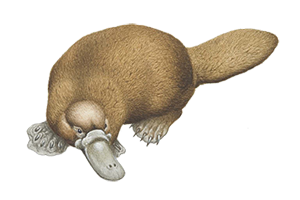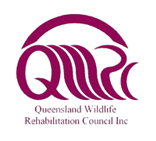
Queensland Wildlife Rehabilitation Council
How To Become A Rehabilitator
So you want to care for wildlife…
Wildlife rehabilitators are volunteers that spend their time, money and resources to rescue, raise and rehabilitate native wildlife. It can be a very rewarding experience but can also be time consuming costly and challenging.
The QWRC and RSPCA Qld recommend talking to your local rehabilitation group and individual rehabilitators in your area before deciding if wildlife rehabilitation is for you. A comprehensive list of wildlife rehabilitation groups operating in Queensland can be found by clicking here
Taking care of wildlife is very different from looking after a domestic pet like cats and dogs. They have special dietary requirements; need frequent veterinary visits and an unwavering commitment from the rehabilitator.
Some native species require specialist knowledge and experience from the rehabilitator and so require a specialised permit. These animals include koalas, bats, platypus, emu, seabirds, raptors, marine turtles, echidnas, cassowary and reptiles.
If you think that you would like to take on the challenge then these are some other things to consider:
Do you have enough time?
Rehabilitating animals often need feeding several times a day and their food may need to be prepared or collected in advance. Most joeys and baby birds will require feeding every few hours so if you are restricted in the amount of time you can dedicate to the animal then young animals may not be a good option. All animals need their cages and bedding changed daily sometimes more. Vets will often prescribe medications that may need to be administered a few times throughout the day. You need to be able to dedicate time to ensuring that the animals will be 100% fit and able to survive when they are returned to the wild. Some animals can be in care for months or even over a year which can limit the options for going on vacation or require someone to tend to the animals while you are away.
Do you have the financial backing?
Wildlife rehabilitators are volunteers that fund themselves. You are required to provide anything the animal needs. This includes housing, food, pouches, teats, heat and medical care (some vets will treat for free). Often care groups have access to discounted or second hand equipment for you to purchase. You need an area away from domestic animals, young children and loud noises to be able to provide the rehabilitating animals with a stress free environment. This is important so that wildlife remains wild and have a healthy fear of predators.
Are you tough enough?
Sadly not all animals that come into care are able to be returned to the wild. Many animals die and often the animals are so injured, sick or too young that the kindest thing to do is the have the animal humanely euthanased by a veterinarian. Wild animals do not like to be kept in cages and do not want close human contact: some injuries simply cannot be treated. All wildlife should be checked over by an experienced wildlife vet when they come into care to ensure they are not suffering needlessly. The law states that wild animals must be returned to the wild and the rehabilitator must give it the best chance at survival, this means respecting that they are wild and not humanising them to be pets.
It is against the law to keep a wild, native animal without a permit or as a pet. Other ways to help wildlife…
A wildlife rehabilitator’s primary role is to rehabilitate wildlife so that it can be returned to the wild. If you don’t think that your lifestyle will accommodate wildlife rehabilitation but would still like to help then there are other options. Wildlife Rehabilitation Groups often need people to man the phones, make pouches and teats, sell merchandise and man stalls to name a few. You could also sign up to do rescues in your local area through the RSPCA Qld 1300ANIMAL wildlife heroes program.
How to apply
In Queensland you must be granted a permit from the Environmental Protection Agency (EHP) to care for and rehabilitate wildlife.
This can be granted by one of two ways:
Join a Group
By joining a wildlife rehabilitation group you may be able to care for wildlife using their permit. A group should offer you courses, information and mentoring to set you up for success. This is usually the preferred option as you will have the support network provided by working with a team. Some groups function as a group of individual permit holders.
To find out contact details for a group in your area please view the Wildlife Rehabilitation Groups page and follow the links.
Apply as an individual
You may apply to the EHP to be granted an individual permit. You will be required to prove you have sufficient experience to be able to go it alone. Find & download the Rehabilitation Permit form at https://environment.des.qld.gov.au/licences-permits/plants-animals/application-forms or https://environment.des.qld.gov.au/licences-permits/plants-animals/rehabilitation/rescue-and-rehabilitation You may also make enquiries by calling 1300 130 372 option 4. Alternatively their email address is palm@des.qld.gov.au

